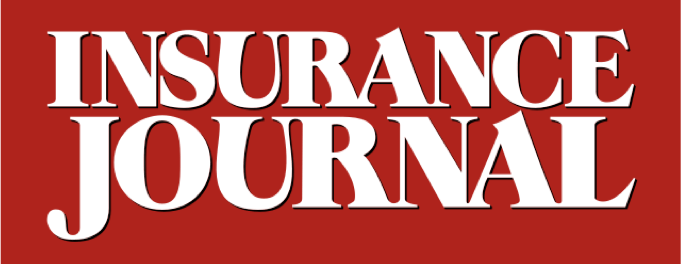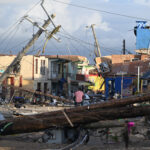Insurance agents and brokers should prepare for a big agency errors and omissions (E&O) litigation wave to crash their shores in 2021.
Agency E&O claims are a lagging indicator, meaning plaintiffs typically only go after agents and brokers after they exhaust other legal avenues—most often suing insurers—and come up short, according to experts at the 2020 virtual Professional Liability Underwriting Society (PLUS) conference.
While E&O claims from the pandemic of 2020 have not happened yet in noticeable numbers, they will, just as they happen following major storms or other disasters, the experts warned.
“When a loss like this happens, first party claims are immediately filed with the carriers. A lot of the carriers still haven’t made final decisions yet on the COVID claims. So we’re still waiting on those,” according to James Redeker, who is involved in overseeing E&O claims across the country as vice president of claims for Westport Insurance Corp., a member of Swiss Re Corporate Solutions.
In addition, with large events, there’s often some form of federal relief as has been already seen with COVID and for victims of disasters. “So it’s usually not until after all of these sources of recovery are exhausted that the third party claim start to pour in.,” Redeker estimated.
He noted that during the first four months following Hurricane Katrina, there were 55 agency E&O claims filed against Louisiana insurance agents. However, over the next eight months, an additional 745 claims came in. “So they’re coming,” he added.
The year 2020 was packed with events to spark lawsuits over claims, including most obviously the pandemic with its lockdowns that shut down much of the economy for periods of time, strained health care systems and drained employers’ and employees’ coffers. The year’s claims generators also included multiple hurricanes, cyber attacks and the hard market.
“Only when the tide goes out do you discover who’s been swimming naked,” is a quote attributed to Berkshire Hathaway CEO Warren Buffet that specialty lines insurance broker Lisa Doherty likes to summon when discussing what happens after a big storm or other major claims event.
“We like to talk about the double trigger, meaning that there has to be an underlying loss on the policy in question to test the policy. If you never actually submit a claim, you’re never going to find an error on the policy,” said Doherty, a founder and CEO of Business Risk Partners.
A major disaster means there is going to be a concentrated and increased number of claims and a spike in the number of policies being tested. “So you just have a greater potential for finding underlying problems in the policy. So the double trigger is, I have a loss arising out of the disaster, I submit it to my carrier, the carrier denies it for whatever reason and then I turn and look to my insurance agent to be my source of recovery rather than the carrier,” explained Doherty, who recalled the surge in agency E&O claims following Superstorm Sandy.
A disaster event that results in numerous and severe claims signals potential trouble for agents, agreed panel moderator Peter Biging, a partner with the law firm Goldberg Segalla and head of the firm’s Management and Professional Liability practice. “It tests the limits, terms and conditions and policies to the extent that there’s either no coverage or there’s insufficient coverage. There’s going to be agent and broker errors and omissions claims,” he warned.
Biging noted that this year’s California wildfires set a record with more than four million acres destroyed. In terms of hurricanes, 12 storms made landfall in the U.S., breaking a century old record, and for just the second time ever, meteorologists had to resort to the Greek alphabet to name storms. And then on top of everything else there was the pandemic.
“2020 is just this unusual year. It’s really a crazy era and it seems like it’s going to get worse,” Biging said. He referred to a comment by a climate scientist at Texas A&M University who said, “If you don’t like all of the climate disasters happening in 2020, I have some bad news for you about the rest of your life.”
Redeker said the amount of covered losses can vary greatly depending on the type of catastrophe, citing the difference between only 36% of damages covered by Hurricane Florence being insured while 77% of the damages caused by California’s Woolsey Wildfire were insured.
While those figures on uninsured losses may represent a selling opportunity, for flood insurance in particular, they also represent a risk for insurance agents and brokers, according to Redeker.
“As we’ve seen, the frequency of these events is rising. It’s not a risk that’s going to go away,” he said.
Biging agreed that uncovered losses will be a driver of coronavirus-related E&O claims. “There’s a big gap between what the C-suite executives think is going to be covered, and the coverage that they actually have,” he said.
The main insurance litigation from the coronavirus disaster is with property insurers.
“Obviously, lots of businesses in the hospitality industry, restaurants, theaters, hotels, you name it. And then many, many, many other businesses have been impacted, so they’re seeking coverage under their property policies for business interruption,” said Ken Fall, chief litigation counsel at Marsh who handles E&O claims.
However, while primarily property-driven, disaster lawsuits can trigger a whole range of other coverage issues as well, added Fall, citing casualty risks, financial and professional risks and others that can all become implicated.
“Lots of bankruptcies, obviously. Through the end of August, large firm bankruptcies had more than doubled. Some really iconic stores like Century 21 and others have filed. In terms of lawsuits, just a huge array of lawsuits has been filed. No surprise.”
Cruise lines in the pandemic show how various lines can be affected.
“You can certainly imagine that a cruise line may have business interruption claims to file under its property policies, but it may also be facing liability claims by passengers who may have been stranded on one of its ships, while the pandemic was going on, and it wasn’t able to come into shore. In the case of Norwegian Cruise Line, for example, they’re also facing a stock drop claim by their stockholders,” said Fall.
Lloyd’s has said its firms are facing claims from 16 different business lines.
Cyber Risk for Agents
Beyond natural disasters and the coronavirus, cyber risk is an area where agents could be drawn into claims litigation with dissatisfied insureds who expected to have coverage.
“There’s a real concern about the growing exposure for agents and brokers in cyber coverage because they’re varied, they’re new. The losses are so new that we just don’t have a good track record on how those policies are going to respond, creating issues for agents and brokers,” said Doherty.
She said a Lloyd’s analysis of the exposure concluded that one cyber attack could cause a single loss across multiple parties ranging from $ 85 billion to $193 billion. “That’s just a staggering number,” she said.
She added cyber attack figures claiming that Merck lost $870 million from business interruption; FedEx, $400 million; Maersk, the shipping company, $300 million.
Also Mondelez, the parent of Nestlé, Cadbury, had a $100 million dollar business interruption loss that is in litigation because Zurich Insurance has taken the position that the claim was excluded under the war in hostile act exclusion.
Doherty referenced an FM Global study that found 70% of C-suite executives felt like cyber coverage would cover all of their losses. “But we know that not to be true because there are certain things that are just not going to be covered,” she said.
More on Pandemic
Just as cyber is new in many ways so has the pandemic been unlike any other disaster because of its broad impact geographically and its diverse economic effects. No state has been spared and many industries hit. It’s not like a wildfire wiping out a town or a hurricane flooding communities in a coastal state.
“What makes COVID-19 just amazing is the fact that it’s impacting the entire country,” Biging said.
There are thousands of lawsuits around COVID alone including the many reported business interruption cases from the hospitality industry and other businesses. There are class actions against colleges by students seeking tuition reimbursements. There are also investor lawsuits alleging insufficient risk disclosure around the impact of the pandemic on operational and financial prospects of companies.
While there have been some rulings, it is too soon to gauge the business interruption litigation in terms of its consequences for agents and brokers.
“I think we need to see how underlying claim denials play out with carriers and even, very specifically, policies, because not all policies are going to respond in the same way,” said Doherty.
She said most property policies have both the physical damage trigger and the virus exclusion. “So if you do get through the physical damage issue, you still have to contend with the virus exclusion.”
Fall said that there have been more than 1,300 cases between policy holders and insurers in state and federal courts and that number is growing every day. About 70% of the time, courts have sided with insurers and granted insurers motions to dismiss. A minority have allowed policyholders to get past the motion to dismiss stage, and into discovery.
Insurers Winning Most, But Not All, COVID-19 Business Interruption Lawsuits
Overall, only a handful of lawsuits so far have named insurance agents and brokers.
“But again, as we’ve all indicated, that number may well increase as time goes on,” Fall said.
E&O claims tied to coronavirus business interruption won’t start coming in until after this year’s litigation storm calms down and decisions become known, the panelists said.
Redeker said the plaintiff’s bar is taking a strategic approach to filing COVID-19 claims against the property carriers., recognizing that there are two basic forms of property policies when it comes to handling virus exposures, those with an explicit exclusion and those without
“Not surprisingly, plaintiffs are heavily suing carriers whose policy forms do not contain a virus exclusion,” he said. “If they can get the courts to find coverage under such a policy, it not only gives coverage to those policy holders, but it also gives them an avenue to recover for the customers who purchased property policies with the virus exclusion. For those customers, insurance agents will be sued for placing property coverage with a more restrictive carrier form than with one that would have afforded the coverage.”
Hard Market
The hard market presents yet another E&O landmine, especially because the pandemic litigation is generating a round of policy changes and new exclusions that agents will have to learn and explain to their customers who are also being hit with rising priced in a hard market.
Specialty lines specialist Doherty said the market hardening is everywhere, unlike after a major disaster season where underwriters can just stay away from states that have been hit.
“When the disaster is national, it makes it a little bit more difficult. So what we’re seeing is there’s much more stringent underwriting and carriers have added COVID supplement apps in almost all lines of business,” she said.
She said every specialty lines product her brokerage sells has a different COVID supplemental application with similar themed questions. There are COVID exclusions onto products where they don’t typically appear, including some insurance agency E&O policies.
“So keeping with our theme of exposures for agents and brokers, the market is changing and that’s going to create exposure for them as they navigate new terms and conditions,” Doherty said.
Any hard market will see more claims being contested or denied and ultimately more broker E&O claims stemming from that, according to Fall. Having a pandemic layered in top of the hard market is going to magnify the situation brokers will have to navigate.
“I think the key is going to be for brokers to clearly communicate those exclusions and other nuances that are appearing in the hardening market to explain them to their clients and then to document those conversations,” Fall advised.
Redeker said that’s good advice for agents looking to protect themselves. “Documentation becomes critical in a hardening market. Never use the term ‘apples to apples’ coverage. Even if the wording in the policy forms is identical, the carriers interpretation may be different,” he cautioned.
Biging, who defends agents and brokers facing E&O suits, noted that there are also operational issues due to the pandemic that could influence communication with clients, many of whom may need to cut costs or be needing something different than they previously had.
“You’ve got brokers who typically would have their insureds into their office and see them visually sign the application and that’s not going to happen, or it’s not happening,” he said.=
“You have situations where brokers will go to visit locations as they normally would and eyeball the circumstances that might’ve changed, and they’re not necessarily doing that now.”
Biging repeated the advice for agents and brokers cited by others: “It’s document, document, document. That’s really the most important thing. Make sure you document everything that you do, every conversation that you have. In particular, if you offer coverage that’s declined or you offer endorsements or increase limits and they’re declined, you need to document that.
Fall agreed. “It’s very difficult to over-communicate as an agent or broker with your policy holder clients. Rarely, are they going to complain that you’re communicating too much. So err on the side of more communication, clear communication and document the communication.”
Was this article valuable?
Here are more articles you may enjoy.



 Florida, East Coast to See Big Insured Losses From More Cat 5 Storms, Researchers Say
Florida, East Coast to See Big Insured Losses From More Cat 5 Storms, Researchers Say  Illinois Attorney General Announces $120M Settlement With Monsanto
Illinois Attorney General Announces $120M Settlement With Monsanto  Product Liability Verdicts Are on the Rise but There Are Ways to Avoid Them
Product Liability Verdicts Are on the Rise but There Are Ways to Avoid Them  Applied Systems, Comulate Spar Over Trade Secret Theft Allegations
Applied Systems, Comulate Spar Over Trade Secret Theft Allegations 

